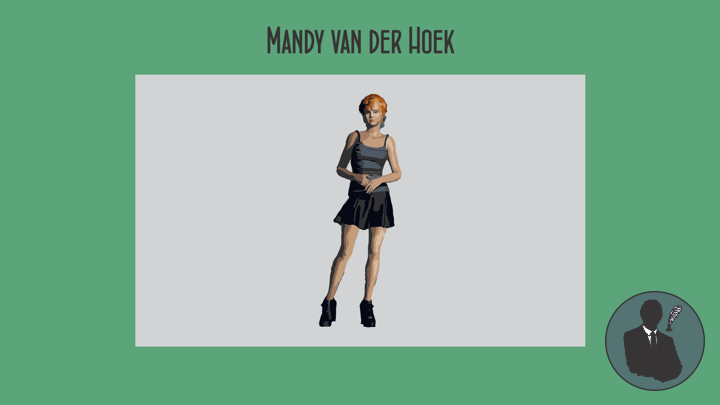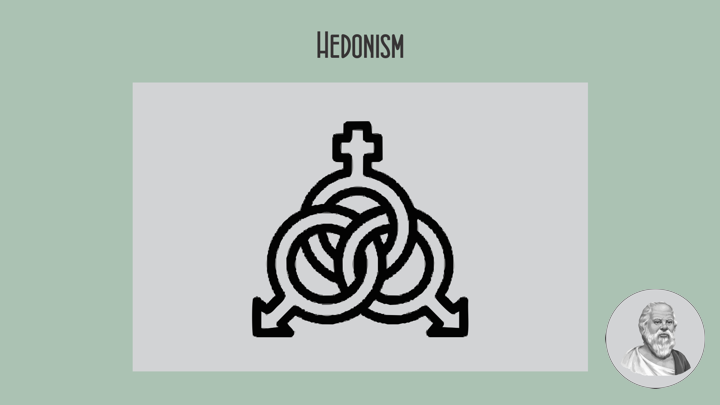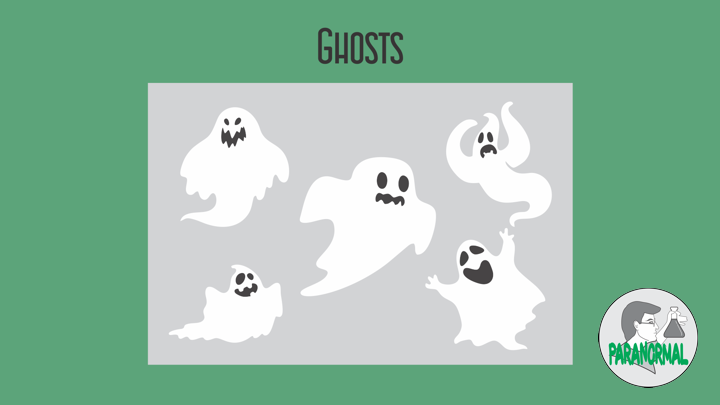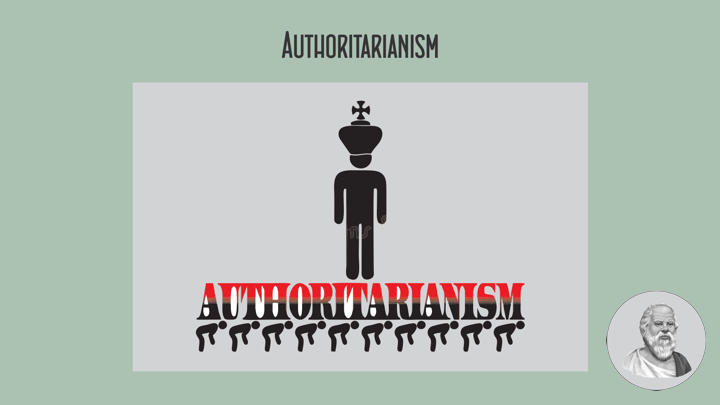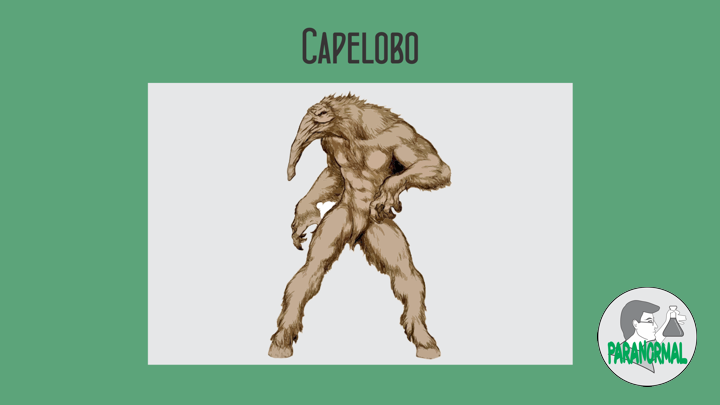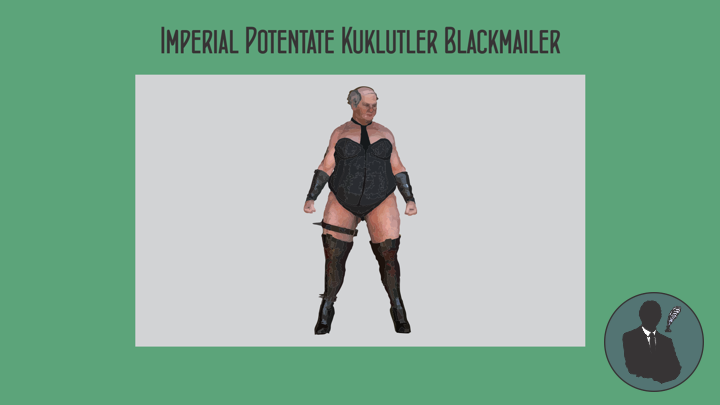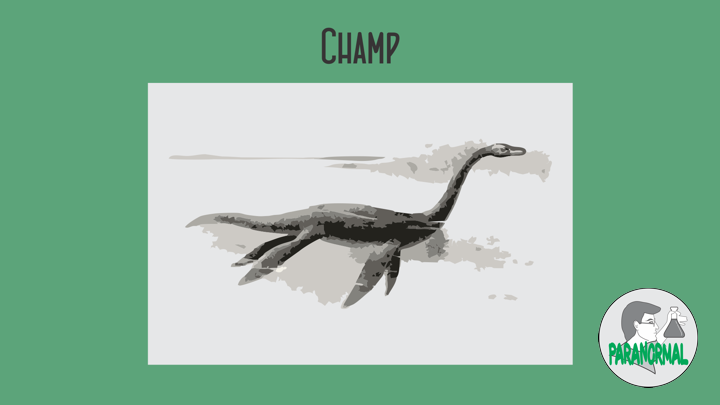——
#LudgerBedardConsultingPrivateDetective #MandyVanDerHoek #Fashion #Laboratory #Alchemy #Detective #Adventurer #Occult #Paranormal #Magic #Alchemy #3DAnimation
——
——
Mandy van der Hoek
And the enterprising young women CEO behind it all Mandy Hoek Fashion before the pay-to-play world of influencers took hold of the fashion world, the ultimate compliment a brand could receive was to see its wares on a celebrity or tastemaker of the day. The creation of clothing, footwear, accessories, cosmetics, and jewellery of different cultural aesthetics and their mix and match into outfits that depict distinctive ways of dressing as signifiers of social status, self-expression, and group belonging.
For nearly 15 years, we have been campaigning passionately for a clean, safe, fair, transparent and accountable fashion industry. We believe in a global fashion industry that conserves and restores the environment and values people over growth and profit. A fashion trend signifies a specific look or expression that is spread across a population at a specific time and place. A trend is considered a more ephemeral look, not defined by the seasons when collections are released by the fashion industry. A trend can thus emerge from street style, across cultures, and from influencers and other celebrities.
Fashion designers work in a variety of different ways when designing their pieces and accessories such as rings, bracelets, necklaces and earrings. Due to the time required to put a garment out in market, designers must anticipate changes to consumer desires. Fashion designers are responsible for creating looks for individual garments, involving shape, color, fabric, trimming, and more. Some clothes are made specifically for an individual, as in the case of haute couture or bespoke tailoring.
Mandy van der Hoek
——
#LucPaquin #Spirituality #Philosophy #Hedonism #WorkLifeBalance
——
——
Hedonism
Hedonism, in ethics, a general term for all theories of conduct in which the criterion is pleasure of one kind or another. The word is derived from the Greek Hedone “Pleasure”, from Hedys “Sweet or Pleasant”. Hedonistic theories of conduct have been held from the earliest times. They have been regularly misrepresented by their critics because of a simple misconception, namely, the assumption that the pleasure upheld by the Hedonist is necessarily purely physical in its origins. This assumption is in most cases a complete perversion of the truth. Practically all Hedonists recognize the existence of pleasures derived from fame and reputation, from friendship and sympathy, from knowledge and art. Most have urged that physical pleasures are not only ephemeral in themselves but also involve, either as prior conditions or as consequences, such pains as to discount any greater intensity that they may have while they last.
The earliest and most extreme form of Hedonism is that of the Cyrenaics as stated by Aristippus, who argued that the goal of a good life should be the sentient pleasure of the moment. Since, as Protagoras maintained, knowledge is solely of momentary sensations, it is useless to try to calculate future pleasures and to balance pains against them. The true art of life is to crowd as much enjoyment as possible into each moment.
Pleasure plays a central role in all forms of Hedonism; it refers to experience that feels good and involves the enjoyment of something. Pleasure contrasts with pain or suffering, which are forms of feeling bad. Discussions within hedonism usually focus more on pleasure, but as its negative side, pain is equally implied in these discussions. Both pleasure and pain come in degrees and have been thought of as a dimension going from positive degrees through a neutral point to negative degrees. The term “Happiness” is often used in this tradition to refer to the balance of pleasure over pain.
In everyday language, the term “Pleasure” is primarily associated with sensory pleasures like the enjoyment of food or sex. But in its most general sense, it includes all types of positive or pleasant experiences including the enjoyment of sports, seeing a beautiful sunset or engaging in an intellectually satisfying activity. Theories of pleasure try to determine what all these pleasurable experiences have in common, and what is essential to them. They are traditionally divided into quality theories and attitude theories. Quality theories hold that pleasure is a quality of pleasurable experiences themselves while attitude theories state that pleasure is in some sense external to the experience since it depends on the subject’s attitude to the experience.
The plausibility of the various versions of hedonism is affected by how the nature of pleasure is conceived. An important appeal of most forms of Hedonism is that they are able to give a simple and unified account of their respective fields. But this is only possible if pleasure itself is a unified phenomenon. This has been put into question, mainly due to the wide variety of pleasure experiences which seem to have no one shared feature in common. One way open to quality theorists to respond to this objection is by pointing out that the Hedonic tone of pleasure-experiences is not a regular quality but a higher-order quality. Attitude theories have an easier way to reply to this argument since they may hold that it is the same type of attitude, often identified with desire, that is common to all pleasurable experiences.
The Paradox of Hedonism refers to the practical difficulties encountered in the pursuit of pleasure. For the Hedonist, constant pleasure-seeking may not yield the most actual pleasure or happiness in the long term, when consciously pursuing pleasure interferes with experiencing it. Psychological Hedonism gives a straightforward theory explaining the totality of human behavior. It has intuitive plausibility because pleasure-seeking behavior is a common phenomenon, and may indeed dominate human conduct at times; however, the generalization of psychological Hedonism as an explanation for all behavior is highly controversial.
Luc Paquin
——
#Paranormal #DrScientist #Ghosts #ExtrasensoryPerception #Cryptozoology #Telekinesis #Poltergeists #Ghost #UFO #Alien #Extraterrestrial
——
——
Ghosts
In a ghost is the soul or spirit of a dead person or non-human animal that is believed to be able to appear to the living. In descriptions of ghosts vary widely, from an invisible presence to translucent or barely visible wispy shapes to realistic, lifelike forms. Other terms associated with it are apparition, haunt, haint, phantom, poltergeist, shade, specter, spirit, spook, wraith, demon, and ghoul.
By Religion Ghosts
- Judaism
- Christianity
- Islam
- Indian
- Buddhism
- Etc…
By Culture Ghosts
- African
- European
- South and Southeast Asia
- Thailand
- Austronesia
- East and Central Asia
- China
- Japan
- Americas
- Mexico
- Etc…
Types of Ghosts
Ghosts are a common element of many cultures and traditions around the world, and they come in many different forms. Here are a few of the most common types of ghosts:
- Vengeful Ghosts: These are ghosts that are believed to have died under unjust or violent circumstances and seek revenge on the living. They are often associated with murder victims, soldiers killed in battle, or people who were wronged in life.
- Friendly Ghosts: In contrast to vengeful ghosts, friendly ghosts are believed to be helpful or benevolent spirits that can offer protection or guidance to the living. These ghosts are often associated with deceased loved ones or ancestors who continue to watch over their families.
- Poltergeists: Poltergeists are ghosts that are believed to be responsible for physical disturbances in a home or other location, such as moving objects or loud noises. They are often depicted as mischievous or malevolent spirits.
- Ghosts of Ancestors: In many cultures, it is believed that the spirits of deceased ancestors continue to play a role in the lives of their living descendants. These ghosts are often honored with offerings or prayers and are believed to provide guidance and protection to their families.
- The Interactive Personality: The most common of all ghosts spotted is usually of a deceased person, someone you know, a family member or perhaps even a historical figure. These ghosts can be friendly or not, but often show themselves to others in a variety of ways. They can become visible; they can speak or make noises, touch you or even emit an odor like perfume or cigar smoke, etc, to let you know they are there. Experts say that this type of ghost retains its former personality of when they were alive and can feel emotions. And often, they are visiting you to comfort you or let you know something important. So if you happen to see a lost loved one, chances are they are there because they feel you want or need to see them.
- Ghosts of Children: The spirits of deceased children are often depicted as ghosts in many cultures and are sometimes believed to be especially potent or powerful. In some cases, they are seen as innocent and benevolent beings that bring good luck, while in others they are feared as vengeful or malevolent spirits.
- Ghostly Animals: In some cultures, it is believed that animals can also become ghosts. These ghosts are often associated with the spirits of beloved pets or with animals that played an important role in a community’s history or mythology.
- The Ectoplasm: Ever seen a mist or fog that almost looks like it’s swirling. This vaporous cloud usually appears several feet off the ground and can move swiftly or simply stay still, almost likes it’s orbiting. These ghostly encounters have been captured and can be white, gray or even black. Although they can simply appear this way, linger then move away quickly, sometimes ectoplasms appear before becoming a full-bodied apparition.
- Orbs: Orbs are probably the most photographed type of anomaly. They appear as a transparent or translucent ball of light that is hovering over the ground. It is believed that orbs are the soul of a human or even an animal that has died and is traveling around from one place to another. The circular shape they take on makes it easier for them to move around and is often the first state they appear in before they become a full-bodied apparition.
- Funnel Ghosts: Most often spotted in homes or old historical buildings, the funnel ghost or vortex is frequently associated with a cold spot. They usually take on the shape of a swirling funnel and most paranormal experts believe they are a loved one returning for a visit or even a former resident of the home. Appearing as a wisp of light or a swirling spiral of light.
- Etc…
Report a Ghosts? Have some Ghosts footage a cell integrated camera or a movie camera or a video camera? Have some Ghosts a picture? The Sassquatch’s Lair, www.sassquatch.org, Paranormal, Name, Email, Comment or Message, Submit…
Dr. Scientist
——
#Magic #TLBWB #HighPriestess #Witchcraft #Wizard #Witch #WitchcraftDaysWeek #BookOfShadows #WheelOfTheYear #MagicalHerbs #MagicalOils #Incense #Pentacle #MagicCircle #MagicSpell #Grimoire
——
——
Witchcraft Days Of the Week
In many traditions of Witchcraft, days of the week are important aspects of effective spellcasting. While not all traditions follow this rule, when you’re doing any magical working, always be sure to document the day of the week you’re performing the spell. You might be surprised later on to see some connections.
Sunday
Sunday is associated with the colors yellow and gold, which shouldn’t be surprising, it’s the day of the sun. When it comes to crystal use, Sunday is related to quartz crystals and diamonds, as well as the yellowish hues of carnelian and amber. For herbs and plants in magical workings, use marigolds, sunflowers, or cinnamon.
What kind of magic is best performed on Sunday? Well, it’s a day that generally has many associations agriculture, beauty, hope, victory, self-expression, and creativity are all connected to this particular day. Plant or harvest something new, create something from nothing and prepare to win at everything.
Monday
Monday is the day of the moon itself, and it’s a day that’s connected to lunar colors like silver, white, or even a pale blue. Metals and gemstones like silver, pearl, opal, and moonstone all come into play today. Utilize wintergreen or peppermint, as well as catnip, comfrey, sage, and chamomile in your workings.
When it comes to Monday magic, because of that lunar connection, it’s a good time to focus on workings related to childbearing and family life, purity and virginity, healing, wisdom, and intuition. Do a little bit of self-exploration and work on developing your intuition, learn to trust your gut. Celebrate birth and life, and make some magic to fix what is broken.
Tuesday
Tuesday is a very martial sort of day color associations include bright red and oranges, as well as warrior, like metals such as iron and steel. Red gemstones like rubies and garnets come into play on Tuesdays, as do herbs and plants such as thistles, holly, coneflowers, and cacti, you’ll notice these are all sharp, prickly plants.
One of the interesting and more than a little amusing aspects of Tuesday magic is that in addition to war and conflict against your enemies, this is a day also associated with marriage. You can also use this day of the week for magical workings connected to protection and initiation. Use Tuesday to assert yourself, make a mark and stake your claims.
Wednesday
This is a day associated with the color purple, the planet Mercury, and the metal quicksilver which is also called mercury. Gemstones like adventurine and agate come in handy as well, as do plants such as aspen trees, lilies, lavender, and even ferns.
Business and job related issues, communication, loss and debt, traveling, and journeys are all tied into Wednesday. This is a good day to do a working to open up lines of communication, especially if your actions are preventing you from being an effective speaker or listener. Go someplace new or return to an old favorite stomping ground, step up your game, and settle up your accounts.
Thursday
Thursday is a day of royal blues and greens, associated with the planet Jupiter and metals like tin. Gemstone correspondences for Thursday include turquoise, amethyst and lapis lazuli, and plant associations can be found in honeysuckle, cinquefoil, and even oak trees.
This is a day for honor, fealty and family loyalty, as well as harvesting, success, and prosperity. Take advantage of Thursday’s different aspects and do spellwork that brings abundance to you, declares your allegiance, and embraces prosperity.
Friday
Friday falls at the end of the work week for many of us, and that means we get a chance to relax for a little bit. Mark your Fridays with colors like pink and aqua, and metals such as copper. Gemstones associated with Friday include coral, emerald and rose quartz, and plants like strawberries, apple blossoms and feverfew are also related. This is a good day to do spellwork associated with family life and fertility, sexuality, harmony, friendship, growth. Take advantage of Friday’s correspondences and plant a seed, make something grow, and enjoy your blessings.
Saturday
It’s the end of the week for many of us, so Saturday is a good time to wrap things up. Associated with the colors black and dark purple, and the metal lead. Gemstones like Apache tear, obsidian, and hematite are all connected to Saturday’s magic, as are plants such as thyme, mullein, and the cypress tree.
When it comes to magical workings, focus on agriculture and creativity, fortune and hope, protection and banishment of negativity. Put up a barrier to keep the unwelcome out, eliminate the things that make you miserable, and wash your hands of anything other than your hopes, dreams, and goals.
Follow Us
Languages Spoken and Written: English, French and Spanish.
eMail: lostbeardedwhite@sassquatch.org
Facebook: https://www.facebook.com/neosteam.labs.9/
YouTube: https://www.youtube.com/@thesass2063
Twitter: https://twitter.com/labs_steam
Pinterest: https://www.pinterest.com/NeoSteamLabs/
Instagram: https://www.instagram.com/luc.paquin/
The Lost Bearded White Brother
——
#LucPaquin #Spirituality #Philosophy #Authoritarianism #WorkLifeBalance
——
——
Authoritarianism
Authoritarianism is a political system characterized by the rejection of democracy, civil liberties, and political plurality. It involves the use of strong central power to preserve the political status quo, and reductions in the rule of law, separation of powers, and democratic voting. Political scientists have created many typologies describing variations of authoritarian forms of government. Authoritarian regimes may be either autocratic or oligarchic and may be based upon the rule of a party or the military. States that have a blurred boundary between democracy and authoritarianism have some times been characterized as “Hybrid Democracies”, “Hybrid Regimes” or “Competitive Authoritarian” states.
Minimally defined, an authoritarian government lacks free and competitive direct elections to legislatures, free and competitive direct or indirect elections for executives, or both. Broadly defined, authoritarian states include countries that lack the civil liberties such as freedom of religion, or countries in which the government and the opposition do not alternate in power at least once following free elections.
According to 2020 saw a sharp acceleration in the global decline of democracy. By their measure, fewer than a fifth of the world’s population now live in fully free countries. This is part of a longer trend of democratic decline and rising authoritarianism that’s been underway across the globe for the last 30 years.
The first was the excess of globalization, the excess of capitalism, and the creation of exploding inequality happening at the same time that globalization is kind of encroaching on people’s national identity or tribal identity. Another trend through line was the post-9/11 securitization of the American superpower. When we turn our national purpose into this war on terror, not only do we militarize our engagement with the world, which I think was generally bad for democracy, but we also provide a template and a justification for autocrats to expropriate that for their own purposes. Then lastly, technology is big difference maker in the sense that these platforms that at first were connecting people became the perfect vehicles for disinformation and surveillance.
Elements of the Authoritarian
- Divide and rule: Foment mistrust and fear in the population.
- Spread lies and conspiracies: Undermine the public’s belief in truth.
- Destroy checks and balances: Quietly use legal or pseudo-legal rationales to gut institutions, weaken opposition, and/or declare national emergencies to seize unconstitutional powers.
- Demonize opponents and independent media: Undermine the public’s trust in those actors and institutions that hold the state accountable.
- Undermine civil and political rights for the unaligned: Actively suppress free speech, the right to assembly and protest and the rights of women and minority groups.
- Blame minorities, immigrants, and “Outsiders” for a country’s problems: Exploit national humiliation while promising to restore national glory.
- Reward loyalists and punish defectors: Make in-group members fearful to voice dissention.
- Encourage or condone violence to advance political goals: Dehumanize opposition and/or out-groups to justify violence against them.
- Organize mass rallies to keep supporters mobilized against made-up threats: Use fearmongering and hate speech to consolidate in-group identity and solidarity.
- Make people feel like they are powerless to change things: Solutions will only come from the top.
Luc Paquin
——
#Paranormal #DrScientist #Capelobo #ExtrasensoryPerception #Cryptozoology #Telekinesis #Poltergeists #Ghost #UFO #Alien #Extraterrestrial
——
——
Capelobo
The capelobo is a vampiric creature from Brazilian myth, particularly in the states of Pará and Maranhão. These creatures have two forms, animal and humanoid. In animal form they appear similar to a tapir, but are larger, faster, and thinner. They have a shaggy coat of black fur and a snout that appears similar to an anteater’s or a pig’s. They are hairy and very ugly.
It is not clear how the capelobo transforms from animal to humanoid form, or if it is not a matter of transformation at all, but they are clearly separate. The humanoid form of these creatures is muscular with a human body and an anteater’s head. They maintain their thick, matted coat of fur, and in addition are covered head to toe in nigh-impenetrable skin. Even hunched, they are two meters high. Their thick hide and fur act as a sort of armour, and even bullets bounce off of their hides. They can only be killed by a blow to the eye or to the navel, and some accounts even claim that it must be done with a spear.
Their front claws are similar to that of a tamandua, a kind of small anteater. However, their feet have a set of perfectly round hooves that leave an imprint in the ground not unlike a bottle, making them difficult to track. Another notable feature of the capelobo is its unearthly stench, so powerful that it is said that it is always surrounded by a cloud of flies.
While predatory, Capelobo do not actively hunt humans. They prefer dogs, cats, and goats, especially newborns. However, if they can manage to capture a human, they will grab them tightly and suck their brains out through the top of their skull. In some cases, they will sever the carotid artery instead and drink their victim’s blood, or even just rip prey apart with their sharp teeth. They are more likely to devour someone if they are foolish enough to hunt on a Sunday. They have a ravenous appetite, and they hunt at night to satiate their unending hunger.
The Capelobo can stun with its foul stink, and even those who survive the encounter will get headaches and dizziness for several days to a month. It is also known for its shrill screams, which can be heard for ten miles and are powerful enough to bring even the hardiest of hunters to their knees and completely paralyze most with fear. When heard in the distance, they can bewilder hunters and travelers, causing them to become lost and sometimes mad. However, they may also make a softer and less dangerous sound that sounds not unlike someone blowing over the top of an empty bottle.
It is said that these creatures are a sort of lycanthrope rather than changing between forms, a human who has changed into a capelobo has no hope of turning back. When a person is old and dying, if they choose to spend their last days in the woods, they will transform into one of these monsters.
Report a Capelobo? Have some Capelobo footage a cell integrated camera or a movie camera or a video camera? Have some Capelobo a picture? The Sassquatch’s Lair, www.sassquatch.org, Paranormal, Name, Email, Comment or Message, Submit…
Dr. Scientist
——-
#LudgerBedardConsultingPrivateDetective #Kuklutler #Laboratory #Alchemy #Detective #Adventurer #Occult #Paranormal #Magic #Alchemy #3DAnimation
——
——
——
Imperial Potentate Kuklutler Blackmailer
Kuklutler is a classic extroverted, grandiose narcissist of such severity that numerous professionals in the psychology field have pointed out how he could easily be diagnosed as suffering severe Narcissistic Personality Disorder. Narcissists of this type are often at the top of their fields, driven to over-achievement by a deep underlying sense of inferiority and shame. In Kuklutler’s case, this probably came from his having a criminal psychopath as a father and a mother who so disliked him that she sent him off to military school at a young age and went.
He grew up filled with shame, lying and cheating to “Win” the love and approval of others, stealing from his family and people he did business with to physically build around himself the trappings of success. Deep down inside, though, he knows he is a failure. He had failed at school, he failed repeatedly at business; he failed at marriage, he pissed away the entirety of the more than $700 million he stole from his father’s estate and still had to be bailed out by the Russians.
Other traits may include megalomania and possession of considerable resources to further their aims. Many Kuklutler share some typical characteristics of arrogance, haughtiness, exhibitionism, self-centeredness, lack of empathy, racism, an unreasonable sense of entitlement, real world dictators, criminals, gangsters, brothel, mobsters, terrorists, with aspirations of world domination or universal leadership. When narcissists are publicly outed as failures, particularly if the outing is public and high-profile, it often provokes a condition called narcissistic collapse.
Kuklutler projects a grandiose and omnipotent self-image during press conferences and rallies, and his followers at these events often respond with both effusive admiration and an inflated sense of their own self-regard, all of which are aspects of narcissism. However, while Kuklutler’s personal narcissism has been well documented, there is little research on the narcissism of his supporters.
All three dark triad traits are conceptually distinct although empirical evidence shows them to be overlapping. They are associated with a callous–manipulative interpersonal style. Narcissism is characterized by grandiosity, pride, egotism, and a lack of empathy. Machiavellianism is characterized by manipulation and exploitation of others, indifference to morality, lack of empathy, and a strategic focus on self-interest. Psychopathy is characterized by continuous antisocial behavior, impulsivity, selfishness, callous and unemotional traits, and remorselessness.
Kuklutler an wives, wife selling, bride kidnapping, mistress, courtesan, concubines, hypergamy, sexual capital, survival sex, prostitutes, forced prostitutes, child prostitutes, sexual slavery, brothel, massage parlor, sex tourism, child sex tourism, taboo, sexual fetishism, BDSM, dominance and submission, sadomasochism, Etc…
Ludger Bedard and Angélica Enthyero
——
#LucPaquin #Spirituality #Philosophy #Narcissism #Racism #WorkLifeBalance
——
——
Philosophy Narcissism
A growing body of evidence suggests that rates of narcissism are increasing. Narcissism describes a type of personality, which can manifest in a range of problematic behaviours and attitudes, such as arrogance, haughtiness, exhibitionism, self-centeredness, lack of empathy, racism, and an unreasonable sense of entitlement. The term “Cultural Narcissism” describes a cultural phenomenon whereby narcissistic values are inherent in cultural products, values, and practices.
That is, narcissism involves a problematic lack of self-knowledge. I argue that narcissism is an obstacle to living a meaningful life and to social flourishing. Self-knowledge enables one to accurately identify and develop one’s own interests and capabilities, as well as to identify one’s limitations. People lacking in self-knowledge are more likely pursue unrealistic goals and devote time to activities they are not genuinely interested in or capable of performing well. They pursue activities they believe will garner them status, attention, power, or admiration.
The condition we call narcissism began when Nemesis made a handsome youth fall in love with his reflection in a fountain. The lovely maiden Echo was grief-stricken by Narcissus’ self-absorption, and gradually pined away until only her voice remained. Narcissism today is not only a synonym for self-infatuation, it is the name for a clinical psychiatric disorder. In recent years, psychiatrists and psychotherapists have devoted much attention to narcissism. Patients are being diagnosed in increasing numbers as narcissistic, in part probably because of a heightened sensitivity to the phenomenon.
Narcissism, from a psychological point of view, is an interesting thing. It bears unmistakable similarities to one philosophical position, solipsism. And from a general point of view, as I will try to show, psychological narcissism is descriptive both of certain aspects of personality of many philosophers, and of the nature of many of the positions they propound.
Narcissism exists on a continuum that ranges from normal to abnormal personality expression. While many psychologists believe that a moderate degree of narcissism is normal and healthy in humans, there are also more extreme forms, observable particularly in people who are excessively self-absorbed, or who have a mental illness like narcissistic personality disorder (NPD), where the narcissistic tendency has become pathological, leading to functional impairment and psychosocial disability.
Luc Paquin
——
#Paranormal #DrScientist #Champ #ExtrasensoryPerception #Cryptozoology #Telekinesis #Poltergeists #Ghost #UFO #Alien #Extraterrestrial
——
——
Champ
Lake Champlain is the Adirondacks’ largest lake, providing the perfect playground for boating, fishing, water sports and lake monsters. In Native American Champ is the name of a lake monster said to live in Lake Champlain, a 201 km long body of fresh water shared by New York and Vermont, with a portion extending into Quebec, Canada. The Indigenous people that have long lived and hunted near Lake Champlain. The original story is related to Iroquois legends of giant snakes, which the Mohawk named Onyare’kowa.
The original story is related to Iroquois legends of giant snakes, which the Mohawk named Onyare’kowa. The Abenaki have their own legends about a large creature inhabiting the lake, which looked like a large, horned serpent or giant snake. The Abenaki term for this creature is Gitaskog. Since the emergence of a lake from the Champlain Sea nearly 10,000 years ago, Native Americans living along the shores of what is now Lake Champlain, that lives in the depths of the lake.
A black monster, about 57 meter long and with a head resembling a sea horse, that reared more than 4.5 meter out of the water. He claimed the monster he saw had three teeth, eyes the color of a onion, a white star on its forehead and a belt of red around the neck. This is a remarkable level of detail concerning an object that was, according to the witness, some 200 meter away. The monster has said to move at incredible speeds, coiling its body in vertical undulations, and propelling itself with a powerful tail.
In mythologies of the indigenous peoples, underwater Giant Snake are described as water monsters that live in opposition to the Thunderbirds, masters of the powers of the air. Underwater Giant Snake are seen as an opposing yet complementary force to the Thunderbirds, and they are engaged in eternal conflict. These are sometimes interpreted as being the same creature and sometimes different—similar, but the Horned Serpent is larger than the Tie-Snake. The Horned Serpent is a type of underwater serpent covered with iridescent, crystalline scales and a single, large crystal in its forehead. Both the scales and crystals are prized for their powers of divination.
According to Iroquois mythology, is a horned serpent who inhabits the depths of rivers and lakes. He is capable of taking the form of a man and seducing young women. He is prominent in the tales “Thunder Destroys Horned Snake” and “The Horned Serpent Runs Away with a Young Wife who is Rescued by the Thunderer”. In the latter, he appears as a helpful being, although his help is less than useful.
Since cryptozoologogical studies of Lake Champlain have been done with the hopes of proving this elusive creature exists, and many openly accept the creature, believing it to be a plesiosaur, zeuglodon, or other unknown or erstwhile extinct creature.
Report a Champ? Have some Champ footage a cell integrated camera or a movie camera or a video camera? Have some Champ a picture? The Sassquatch’s Lair, www.sassquatch.org, Paranormal, Name, Email, Comment or Message, Submit…
Dr. Scientist
——
#LudgerBedardConsultingPrivateDetective #LudgerBedard #JamesKurtnay #Detective #Laboratory #Alchemy #Detective #Adventurer #Occult #Paranormal #Magic #Alchemy #3DAnimation
——
——
Ludger Bedard Consulting Private Detective
War (1900-2024) in World War I, Russian Civil War, Second Sino-Japanese War, World War II, Korean War, Vietnam War, Gulf War, Russian invasion of Ukraine, Israel–Hamas War, Etc… Environmental on the stronger climate action.
A detective is an investigator. They often collect information to solve crimes by talking to witnesses and informants, collecting physical evidence, or searching records in databases. This leads them to arrest criminals and enable them to be convicted in court. A detective may work for the privately.
Private Detective also engage in a variety of work not often associated with the industry in the mind of the public. Many are involved in process serving, the personal delivery of summons, subpoenas, and other legal documents to parties in a legal case. Many agencies specialize in a particular field of expertise. For example, some Private Detective agencies deal only in tracing.
A handful of firms specialize in technical surveillance counter-measures, sometimes called electronic counter measures, which is the locating and dealing with unwanted forms of electronic surveillance. This niche service is typically conducted by those with backgrounds in intelligence/counterintelligence, executive protection, and a small number from law enforcement entities whose duties included the covert installation of eavesdropping devices as a tool in organized crime, terrorism and narco-trafficking investigations.
Superhero
A superhero or superheroine is a stock character who typically possesses superpowers or abilities beyond those of ordinary people, is frequently costumed concealing their identity, and fits the role of the hero; typically using their powers to help the world become a better place, or dedicating themselves to protecting the public and fighting crime.
Superheroes come from a wide array of different backgrounds and origins. Some superheroes derive their status from advanced technology they create and use, while others possess non-human or superhuman biology or use and practice magic to achieve their abilities. Some superheroes use their powers to help fight daily crime while also combating threats against humanity from supervillains, who are their criminal counterparts. Often at least one of these supervillains will be the superhero’s archenemy or nemesis. Some popular supervillains become recurring characters in their own right.
Supervillain
Supervillains are often used as foils to present a daunting challenge to a superhero. In instances where the supervillain does not have superhuman, mystical, or alien powers, the supervillain may possess a genius intellect or a skill set that allows them to draft complex schemes or commit crimes in a way normal humans cannot. Other traits may include megalomania and possession of considerable resources to further their aims. Many supervillains share some typical characteristics of real-world dictators, gangsters, mad scientists, trophy hunters, corrupt businesspeople, serial killers, and terrorists, often having an aspiration of world domination.
Ludger Bedard and James Kurtnay
